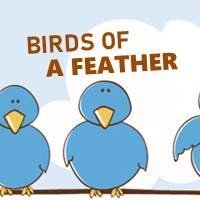
Birds of a Feather Activity
With the Birds of a Feather activity you help illustrate how diverse teams can be more productive and creative.
Participants naturally want to form groups with common characteristics. This exercise illustrates how diverse groups have access to more resources and provide a greater variety of solutions.
Each person is given an index card with a letter on it, and then asked to form a group of five people. Participants assume that they should get into groups with others who have the same letter.
However, when the facilitator asks them to form the longest word possible with the letter cards, they realize that it would have been more beneficial to have created a diverse group.
Write the letter “T” on an index card. On the next index card write the letter “E”. Continue with the letters “A”, “M”, and “S” on the next three index cards. Prepare enough cards so that each participant will have a card with one of these five letters.
Mix the prepared index cards and give each participant a random card.
Ask the participants to form groups of five people as quickly as possible. Most participants will form groups with people who have an index card with the same letter as theirs.
Then, ask the participants in each group to form the longest word possible with the letters on their index cards.
Moment of Reflection
Point out that the groups that have participants with index cards of the same letter are not able to spell any words. Explain that if the participants had formed themselves into groups with index cards with different letters they would have been able to spell the word “TEAMS”.
- What is the impact on team production when only people with the same characteristics interact?
- What benefits do singularities and particularities bring to the group?
- What surprised you about the exercise? What conclusions could you draw after doing this exercise?
The topics of this publication: integration, diversity, reflection, critical thinking, interactions, self, teamwork, foster relationships


